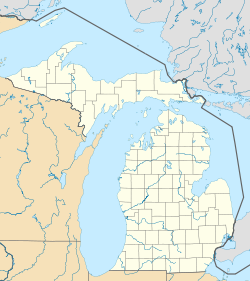Heartside Historic District | |
 | |
 Interactive map showing the location for Heartside | |
| Location | Roughly bounded by Division and Ionia Aves and Cherry and Louis Sts., Grand Rapids, Michigan |
|---|---|
| Coordinates | 42°57′42″N85°40′09″W / 42.96167°N 85.66917°W |
| Architectural style | Late Victorian, Commercial Italianate, and Richardsonian Romanesque [1] |
| NRHP reference No. | 82002844 [2] (original) 100007933 (increase) |
| Significant dates | |
| Added to NRHP | March 2, 1982 |
| Boundary increase | July 11, 2022 |
Heartside is a neighborhood located near downtown Grand Rapids, Michigan. Heartside district is a developing area in the city known for its art. It has restaurants, a park with a playground and splash-pad, and a recently opened farmer's market. However, it also has experienced much urban decay, features numerous abandoned buildings, and contains a large presence of homelessness. [3]


